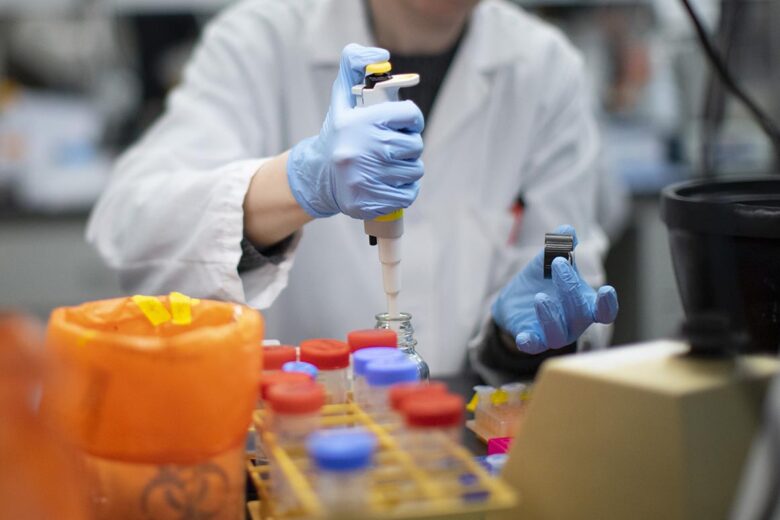When the Covid-19 pandemic came in the 2020, nobody knew how severe the impact was going to be. Right off the bat, there were diagnostic testing and trials happening to understand how the virus worked. By the time of the second wave, efforts of clinical laboratories all across the globe were working tirelessly to combat the recurring challenges this virus presented.
The main goal was to diagnose patients as accurately as possible, identify disease causing pathogens, and roll out a vaccine. Across the US, medical professionals were involved with pathologists and medical laboratory scientists. As the virus took over the world, clinical labs also had to deal with shortage of staff and multiple supply chain related issues. There was continuous critical testing to combat the pandemic.
But even though there were no shortage of challenges for dedicated testing, all of the laboratory experts have been working consistently to support the medical system to combat the pandemic. In this article, we will talk about clinical labs and their reaction time and efforts to the pressing need of the pandemic. We will also include information as to how they worked with government restrictions among other challenges.
The Quick Response of Clinical Facilities

Without medical researchers constantly testing with the virus, having diagnostic tests that were highly accessible would not have been possible. It was because of the rapid response rate of these labs that the very first diagnostic test was introduced in 2020, during the end of February.
Because of its success the initial batch of testing kits was rolled out. The labs were under severe pressure and there were constant surveys about their practices. Their reactions to running tests related to vaccination and diagnosis were also noted. For instance, the Association for Molecular Pathology ran different surveys to create a fair assessment of the efforts and measures.
The surveys conducted gave the results that almost all the facilities located in the US were working round the clock. They were also operating with full staff despite the health risks. There were medical resource shortages presenting another issue. The lab professionals and other experts had to work with a significant lack of respite in the daily routine.
Despite these persisting issues, the laboratory staff continued to do critical testing. Initially, establishing an association between the bureaucracy and lab technicians was important. You can get more information about the pandemic response with northshoreclinical.
This connection would have enabled the laboratories to run a large-scale testing for better engagement. The Centers for Disease Control and Prevention was required to incorporate the provision supporting dedicated testing to find a speedy solution. The criteria of rolling out vaccination for a particular age group also needed to be efficiently chosen.
Tackling Government Restrictions

Clinical laboratories relied on how people reacted to the virus to create targeted solutions. Apart from having small problems that impacted day to day operations, government regulations also post a significant delay in critical testing. The first regulation that was introduced in the beginning of 2020 was the restriction to run diagnostic tests on any patients showing symptoms of the disease.
Eventually, the government issued an order which made laboratories restrained in offering quality diagnostic tests. The health emergency was an unprecedented challenge which led to a delay in the action. Because of this setback, the presentation of an accurate diagnostic test and subsequent vaccination was pushed back.
This spread could have prevented the research for diagnostics and vaccination being given adequate resources to run critical testing as efficiently as they wanted to. In the event of a future pandemic, these professionals should have been given more time to take advantage of all the existing medical procedures and data.
As per the CLIA program, all facilities can perform diagnostic tests on a larger scale to help all the patients suffering from the virus. Continuous clinical testing would have had a better response prepared in time to combat the first wave of the pandemic.
There was a certain regulatory oversight which delayed the reaction of clinical labs and medical professionals. One way in which this could have been better handled was through proper understanding of medical procedures. Trusting the expertise of the labs to create diagnostic tests specifically catering to a particular variant is also essential.
The Resource and Supply Chain Restrictions

All the supply required for better treatment of the ailing and to ensure the safety of the doctors were being shipped directly to hospitals. There was a significant issue with the supply and demand. One way in which clinical laboratories combatted the supply chain disruptions was that they switched up how they were testing the virus.
Since the resources provided were not meeting the testing demands of all the clinical laboratories working tirelessly to help during the pandemic. When there were multiple methods of testing employed, the demand for a particular resource was distributed across different channels which combated the disruptions effectively.
Had there not been supply disruptions, the testing could have been faster and more effective. This disruption and resource vulnerability was faced with high flexibility of professionals that were already giving an effective pandemic reaction.
One way in which the FDA recommendation did not help was that it proposed minimized testing. A larger demographic needed to be covered for accurate results. This setback in time was because severely ill patients did not receive adequate care and tests due to the lack of resources.
The Takeaway
We can thus say that understanding the efforts of clinical labs is important to know how well they responded. There were constant challenges in terms of the government’s approach to the situation, consistent supply chain disruptions, the short staffing and the limited resources they were provided.
Nevertheless, it was commendable that the laboratory professionals worked tirelessly around the clock at full staffing to create diagnostic tests. Had there not been such an efficient and flexible solution, the diagnostic testing and vaccination would have been hard to come by.


